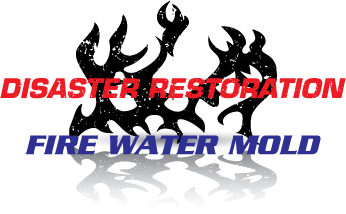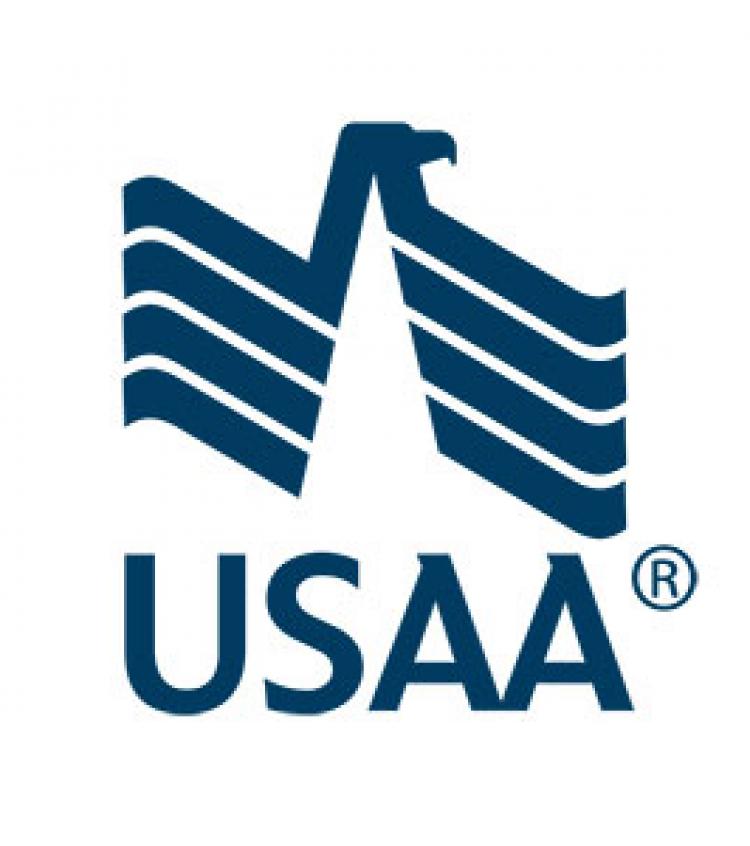Water
How long will it take my property to dry?
Drying time is determined by a combination of factors including the location, duration and source of water, the types of building materials, the weather conditions and how quickly emergency services begin. Through consistent monitoring and evaluation of the drying process, we can determine when the drying is complete. Your carpet may feel dry to the touch, but padding and sub-floors may still be wet underneath. While there are no rules to determine how long your property will take to dry, we can tell you it may take between three to five days or more, depending on the conditions.
How do I know when my property is completely dry?
Proper testing with our specialized equipment is the correct way to determine if things are completely dry. Touch alone may be a false indicator.
Will turning up the heat help dry things out?
Not necessarily. We will adjust the temperature to its optimum setting for the proper drying conditions. Please do not change the setting or shut off the systems; doing so may prolong the drying process.
My wood floors are wet and buckling. Will they have to be replaced?
Wood flooring must be evaluated during the drying process. We employ specialized drying systems and dehumidifiers which enable us to create an environment where wood floors can dry more efficiently and resume their original shape. Due to the density of hardwood flooring and urethane finishes, drying may take up to three weeks or longer. If you filed a claim, your insurance adjuster will work with you to make the final decision as to whether floors will need to be refinished or replaced.
What about my wet furniture?
The extent of the damage and the construction of the furniture will determine if your furniture can be restored. Your furniture must be dried before damage can be adequately assessed. Non-salvageable furniture will be documented for you and if any items need to be discarded, a customer release form will need to be signed.
Do I need to move out of my property during this process?
If you file an insurance claim, you may receive guidance from your insurance representative. However, this is a decision you must reach on your own. Here are several things to consider. Safety is paramount. Our equipment is as childproof as possible, but we require your supervision for making sure no children play with it. Air movers and dehumidifiers will create some noise and make your property drafty for a few days. It is important that the equipment remains on, so if the noise is disruptive to you, you might want to consider an alternate place to stay.
What’s that smell?
It is not unusual to smell odors during the drying process. Increased heat and humidity can also lead to increased odors that may be coming from the drying building materials, or dormant spill and accident areas. Do not confuse these normal odors for the odor of mold. As the drying process continues and humidity levels drop, you’ll notice these odors disappearing on their own. Deodorizers often used to minimize effects as well.
My ceilings are wet. What needs to be done?
Our technicians will evaluate moisture content, determine the severity of the damage and may have to remove some of your ceiling for ventilation. Wet insulation can also be a hazard and may need to be removed.
Should I open the windows to help the drying process?
Opening your windows to assist the drying process is not always recommended. Outside weather conditions may vary, so the technician will determine when and if the outside air is appropriate.
Can I walk on the area during the drying process?
It is strongly suggested that you keep the traffic to a minimum. Wearing shoes is recommended for your safety.
Can my carpet be restored or will it have to be replaced?
A few reasons your carpet may not be salvageable:
- Delamination (occurs when the backing separates from the carpet fiber)
- Loss of adhesion (may be caused by prolonged exposure to water or age of the carpet)
- Permanent stains
- Carpet covers wood flooring (to salvage the wood flooring)
- Sewage contamination
Why does my specialty floor need to be removed?
Non-porous flooring can trap water and cause a vapor barrier which prevents it from drying properly.
Why did the technician leave wet carpet on my stairs?
Carpet on the stairs is generally not removed for safety reasons. Exposed tack strip or staples, especially on steps is dangerous. However, there are situations where removing carpet from steps is necessary to prevent damage to hardwood steps or in the case of sewage contamination. Removing tack strip is not advised, as this may damage the hardwood or the sub-floor. Extreme caution must be used whenever tack strip is exposed or when the carpeted stairs are damp. If carpet left on the stairs is unsalvageable, it will be removed when new carpet is installed.
How will you match my carpet pad?
A sample of your pad is brought to the office for a match. When available, an identical pad will be used. When your original pad is not available, we will provide a pad of the same quality, thickness and density. A similar pad may differ in color based upon the time it was manufactured.
Why are air movers and dehumidifiers used?
When water damage has occurred, water can be absorbed into the drywall (sheetrock), baseboards, sub-flooring, and etc. Drying these surfaces requires high-velocity air movers to accelerate the release of absorbed water into the air. Dehumidifiers are necessary for removing this excess moisture to help protect property and create conditions for efficient drying. Please do not turn off or move drying equipment without first calling Disaster Restoration.
Who is responsible for monitoring the drying equipment?
Our water damage mitigation technicians will place and monitor equipment to achieve optimal results in the shortest amount of time. Please make sure no one turns the equipment off or moves it. Please notify our office immediately if the power goes off or if the equipment turns off.
What will it cost to run the equipment?
Based on average electrical rates, it may cost about one dollar per day per piece of drying equipment to operate. Actual rates can vary depending on current rates from your local electricity provider.
What about sewage contamination?
Hard surfaces can be cleaned and sanitized. Affected items that cannot be sanitized require disposal. Porous materials such a drywall, ceiling tiles, insulation, particleboard, paneling, etc. that have been directly affected should be removed during the emergency service visit.
Who is responsible for paying for the services?
Ultimately you, the property owner, are responsible for payment. As the property owner you will need to sign a form authorizing the work and payment. If this is an insurance claim, Disaster Restoration generally collects only the deductible amount and bills the balance to your insurance provider as a service to you. If you have a large loss, your mortgage company may be included as a payee on the payment from your insurance company, you may need to obtain a signature from them as well. If your claim is not covered or you decide not to file a claim, you will be expected to pay in full at the time of service.
Fire
How long will the restoration process take?
Because there are many variables and many services involved in fire and smoke restoration, it is difficult to predict exactly how long the complete restoration will take. Consult with your project manager on the estimated dates and phases of your restoration project.
Can I clean it myself?
We suggest that you do not attempt any “do-it-yourself” cleaning methods without consulting your Disaster Restoration Project Manager. Pre-testing, using the right cleaning agent for the particular item, mixing deodorizing agents with cleaning solutions and using correct dilution rates are just some of the ways a fire restoration technician expertly controls the results. Professional cleaning systems and products used by experienced, trained technicians give you the best chance for complete restoration of your belongings.
What are some safety concerns?
At Disaster Restoration, occupant and worker safety is top priority. During the initial inspection, safety hazards are identified and addressed, including debris removal, air quality, electrical hazards, slip and trip hazards, etc. Burnt electrical cords and appliances are separated out for disposal, and questionable electrical appliances are unplugged and tagged for evaluation of safe operation. Electrical power may be turned off and kept off until evaluation by a licensed electrician.
Can I turn on my heating and air conditioning unit?
We recommend that you do not turn on your furnace or air conditioning unit without clearance from the HVAC contractor.
What items do I keep in my possession?
- Cash
- Checkbooks
- Flammables
- Gasoline Cans
- Medications
- Personal Documents
- Pets
- Stamp/Coin Collections
- Valuable Jewelry
- Valuable Paintings
- Weapons/Ammunition
- Etc.
How do I keep track of non-restorable items?
We will provide you with a Destroyed Items form so you can make a list of items (including food items) deemed non-restorable. It is an easy to use form, and will save time for all involved. Make a copy for your insurance company and keep one for yourself.
Do I need to move out of my property during this process?
This is ultimately your decision. Some things you may want to consider are safety concerns, odors, electricity, noise from equipment, etc. If vacating your premises for any length of time, consider the following: forward your mail to your temporary residence; stop newspaper and other deliveries; notify utility company, cable company, etc. of temporary suspension of services.
Do I need general contractors?
We, at Disaster Restoration work with the best contractors for plumbing, electrical, and HVAC. We handle all roofing, drywall, painting, cleaning, framing, trim work, etc. in house. However, if you have someone you’d like to use, please let us know.
Who is responsible for paying for the service?
Ultimately you, the property owner, are responsible for payment and will need to sign a form authorizing payment for the restoration services. If this is an insurance claim, Disaster Restoration generally collects only the deductible (co-payment) amount from you and bills the balance to your insurance provider as a service to you. If you have a large loss, your mortgage company may be included as a payee on the payment from your insurance company, and you may need to obtain a signature from them as well. If your claim is not covered by insurance or you decide not to file a claim, you will be expected to pay in full at the time services are completed.
Mold
What are symptoms of mold in my house?
Mold damage restoration may be necessary when these common symptoms stemming from mold damaged homes start to affect you with:
- Stuffy nose
- Coughing
- Wheezing
- Minor eye, skin or throat irritation
- Headaches
Those with allergies to mold, asthma or a compromised immune system can have even more severe reactions.
Can I just use Clorox to remove the mold I found?
We do not recommend using Clorox to remove mold. Clorox will remove initial staining, however, the spores are still there and it will come back. Please call for your free estimate regarding mold remediation. Do not attempt to remove yourself. Mold is very hazardous to your health if you aren’t wearing protective gear.
What causes mold?
- High humidity, condensation, poor ventilation, wet clothes, flooding not taken care of in the correct way, damp basements, water build up around the foundation of your house can and will all cause mold issues. Mold needs
- Mold spores
- A food source (ex: wood, drywall, cotton)
- Darkness (mold can't grow under ultraviolet light)
- Warmth (mold can't grow in freezing temperatures)
- Oxygen
- Moisture (ex: water leaks, humidity)
- Enough time (most molds can begin to grow in 24-48 hours if the conditions are right)
Moisture is really the key cause of mold growth since the other conditions on the list are always going to be present in homes.
So, essentially, the difference between whether mold grows in your home or not comes down to whether you have a moisture problem.
How do I prevent mold from growing?
- Prevent moisture
- Prevent water leaks
- Prevent condensation with good ventilation
- Reduce humidity with a dehumidifier
What will mold grow on?
Some materials mold commonly grows on in the home include wood, carpet, food, paper, insulation, wallpaper, paint, wallpaper glue, plasterboard, fabrics, cotton, books, leather, chipboard, furniture, dust, ceiling tiles, inside air conditioners and almost any other organic material.
How do you remove or remediate mold?
The steps our professionals here at Disaster Restoration take in mold remediation and abatement are:
- Wear protective equipment such as Tyvek, full face respirators and gloves.
- Contain mold spores by building a containment barrier.
- Set up negative pressure with a piece of equipment called an air scrubber.
- Remove the mold by HEPA vacuuming and sanding spores to remove roots if needed.
- Prevent mold returning by drying the area completely with high velocity fans.
- Clean belongings through a hot water process. Some items may not be salvageable.
- HEPA vacuum a second time in all areas affected by the mold.
- Dispose of the mold in a safe, sealed, contained manner so as to not spread spores.




